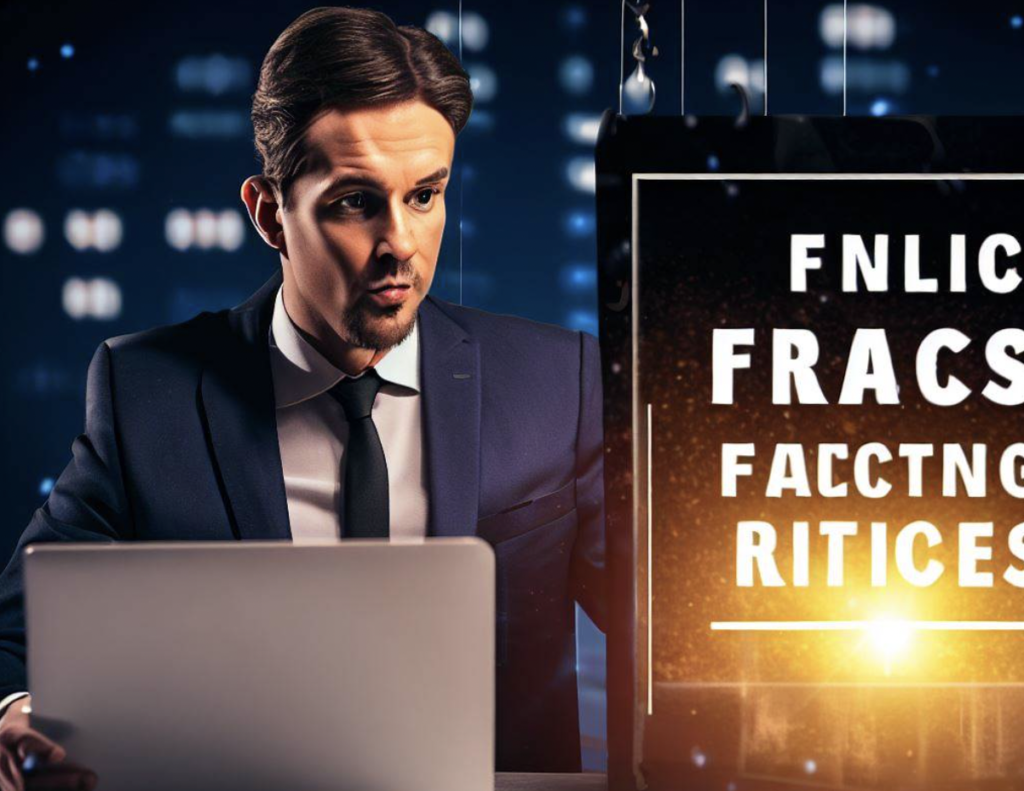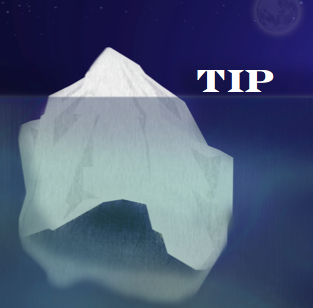
AI Generated Image
Artificial Intelligence (AI) is frequently mentioned for its capacity to blur the lines between facts and fiction. Numerous articles envision a future in which AI bots construct believable scenarios without relying on direct observation. Many instances illustrate the potential pitfalls of this. So, if AI can excel at finding the best incorrect answer, why can’t it excel at finding the best correct answer?
In this early stage of widespread AI and machine learning adoption, many proponents acknowledge the necessity of human involvement in the learning process. This raises the age-old question: “Who can we trust?” This is especially pertinent when the incentive is to replace humans with machines. The enduring challenge (and opportunity) is to avoid wholesale human replacement and instead focus on enhancing human abilities with the aid of new technology.
Economics is fundamentally driven by incentives.
The Ingenesist Project’s Innovation Bank provides an ideal environment for AI and machine learning to prioritize facts over fiction. Through a strategic blend of game theory, blockchain technology, and AI, The Innovation Bank introduces an alternative set of incentives that guide participant actions. The Innovation Bank serves as a self-regulating truth engine, safeguarding society against malicious actors attempting to disseminate unfounded or fraudulent claims.
A Multi-Agent Algorithmic Game:
In essence, The Innovation Bank operates as a game in which participants make claims about the state of the world, which must then be validated by other participants. Each participant is rewarded with an electronic token for creating an immutable node on a network graph. As the network expands, the graph accumulates increasingly valuable business intelligence. Accessing this intelligence requires the expenditure of tokens, potentially purchased by institutional users from a third-party clearinghouse. This system eliminates incentives for cheating.
Natural Language Processing (NLP):
AI-powered NLP algorithms can scrutinize the language used in node creation, detecting patterns, inconsistencies, or suspicious elements. NLP models understand context and semantics, enabling them to identify potential fraud or falsehoods. NLP also assists in verifying claims by cross-referencing them with external sources (validating the validator).
Data Analysis and Pattern Recognition:
AI can process and analyze vast amounts of blockchain data to uncover patterns and anomalies. By comparing multiple claims and validations, AI can identify discrepancies or abnormal behavior indicative of fraud. These capabilities help distinguish genuine claims from fraudulent ones, with no incentive for dishonesty.
Image and Video Analysis:
In cases involving visual evidence, AI employs computer vision techniques to analyze images or videos for authenticity. AI assesses image metadata, detects alterations, and evaluates facial expressions and body language to spot potential manipulation or fraud. Here, the condition arises where crafting a believable falsehood becomes more expensive than simply presenting facts.
Network Analysis:
AI examines the connections between nodes in the blockchain network, identifying suspicious networks or clusters that suggest collusion or fraud. This analysis sheds light on the credibility and trustworthiness of suspect nodes.
Continuous Learning and Adaptability:
AI systems continuously learn from new data, adapting algorithms to evolving fraudulent tactics. Machine learning enhances accuracy in distinguishing truth from fraud, even as the system encounters new forms of deception.
Risk Scoring and Fraud Detection:
AI assigns risk scores to nodes based on factors like proximity to other nodes, validation history, and information consistency. Predictive models identify high-risk nodes or validations, alerting the system to isolate these sources.
Conclusion:
A new economic framework can be seamlessly integrated into existing business methods, creating a condition where falsification is costlier than authenticity. This sharpens the blurry line between fact and fiction. Under this condition, AI can play a vital role in discerning fact from fiction by tracking the creation, circulation, and adoption of digital receipts. AI’s analytical prowess, pattern recognition, and continuous learning ensure the system remains robust at isolating fraudulent activities. The combination of blockchain technology and AI-driven analysis forms a potent framework for curating truthful information and upholding system integrity.
Artificial Intelligence is widely cited for the potential to spoof facts with fiction. Countless articles predict a world where AI bots craft statistical plausibility in the absence of direct observation. Countless examples demonstrate how this can go terribly wrong. So, If AI can be used to find the best wrong answer, why can’t it be used to find the best right answer?
At this early stage of widespread adoption of artificial intelligence and machine learning (AI/ML), many proponents have conceded that human involvement in the learning protocol will be necessary. This leads to the age old problem of: “who do you trust?” – especially where the incentive is to replace humans with machines. The age-old challenge (and opportunity) will be to resist the wholesale replacement of humans and focus on creating a higher order where humans ability is amplifies with the assistance of new technology.
Economics is the Science of Incentives
The Innovation Bank creates an environment ideally suited for AI/ML to anchor facts over fiction. Using a strategic combination of game theory, blockchain, and AI, The Innovation Bank introduces an alternate set of incentives under which participants will operate. The Innovation Bank forms a self-regulating truth engine that can safeguard the health and welfare of society against malicious actors actively trying to pass off unfounded or fraudulent claims.
Multi-Agent Algorithmic Game
Briefly described, the Innovation Bank is a game where players make claims about the state of the world. These claims must then be validated by another player. Each player is then rewarded an electronic token for producing an immutable node on a network graph. As the network grows, its graph stores increasingly valuable business intelligence. In order to access this business intelligence, one must expend tokens. Institutional users would likely need to purchase tokens from a 3rd party clearinghouse listing from those who may seek to liquidate their tokens, thereby giving them a market value based on supply and demand. There is no incentive to cheat.
Natural Language Processing (NLP):
AI-powered NLP algorithms can analyze the language used in the formation of nodes, looking for patterns, inconsistencies, or suspicious elements. By understanding the context and semantic meaning of the text, NLP models can identify potential instances of fraud or falsehoods. NLP can also assist in verifying claims by cross-referencing them with external sources of information (validating the validator).
Data Analysis and Pattern Recognition:
AI can process and analyze large volumes of data within the blockchain to identify patterns and anomalies. By comparing multiple claims and validations, AI algorithms can detect and isolate discrepancies or abnormal behavior that may indicate fraudulent activities. These analytical capabilities help in distinguishing genuine claims from fraudulent ones. Again, there is no incentive to cheat.
Image and Video Analysis:
In scenarios where claims involve visual evidence, AI can employ computer vision techniques to analyze images or videos and determine their authenticity. AI algorithms can assess image metadata, detect alterations, or analyze facial expressions and body language to identify and isolate potential manipulations or fraudulent content. An essential condition is reached where forming a viable falsehood is more expensive than simply providing fact.
Network Analysis:
AI can examine the relationships and connections between nodes in the blockchain network. By analyzing the patterns of validations and associations, AI algorithms can identify suspicious networks or clusters that might indicate collusion or fraudulent behavior. This network analysis provides valuable insights into the credibility and trustworthiness of suspect nodes.
Continuous Learning and Adaptability:
AI systems can continuously learn from new data and adapt their algorithms to evolving fraudulent techniques. By leveraging machine learning, AI models improve over time, becoming more accurate in distinguishing between truth and fraud. As the system encounters new types of fraud, AI can detect emerging patterns and update the validation mechanisms accordingly.
Risk Scoring and Fraud Detection:
AI can assign risk scores to specific nodes based on various factors, such as proximate to other nodes, validation history, and the consistency of information. By utilizing predictive models, AI can identify high-risk nodes or validations, alerting the system to isolate that particular source node.
Conclusion:
A new economic game can be easily inserted to existing business methods to create the essential condition where falsification is more expensive than authenticity. Under this condition, AI can become very useful in isolating fact over fiction by simply tracking the creation, circulation, and uptake of digital receipts. AI’s analytical capabilities, pattern recognition, and continuous learning ensure that the system remains robust and effective in isolating fraudulent activities. The combination of blockchain technology and AI-driven analysis forms a powerful framework for curating truthful information and maintaining the integrity of the system.

